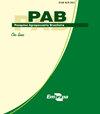甘薯叶供人类食用的潜在用途
IF 0.7
4区 农林科学
Q3 AGRICULTURE, MULTIDISCIPLINARY
引用次数: 0
摘要
摘要本工作的目的是选择具有潜在供人类食用的叶片的甘薯(Ipomoea batata)基因型。采用完全随机区组设计,3个重复,每小区10株,试验26个试验基因型和4个商品品种。这项试验在巴西米纳斯吉拉斯州的拉夫拉斯市进行。叶片形状和叶片、空气部分产量、可食性叶产量、可食性叶百分比、可食性叶干质量和乳胶产量,以及叶片总叶绿素、pH、可溶性固形物含量、可滴定酸度、总酚类化合物和花青素含量进行了评估。根的特点是其果肉和果皮的颜色。15个基因型的产率最高,其中空中部分(29.6 ~ 51.8 Mg ha-1)和食用叶(7.8 ~ 12.7 Mg ha-1)。在生化分析中,叶绿素、总酚类物质和花青素含量较高。此外,pH值、可溶性固形物和叶片可滴定酸度在不同基因型间无显著差异。推荐十种基因型的叶子供人类食用。本文章由计算机程序翻译,如有差异,请以英文原文为准。
Potential use of sweet potato leaves for human consumption
Abstract The objective of this work was to select sweet potato (Ipomoea batatas) genotypes with leaves with potential to be used for human consumption. Twenty-six experimental genotypes and four commercial cultivars were tested in a randomized complete block design with three replicates and ten plants per plot. The trial was carried out in the municipality of Lavras, in the state of Minas Gerais, Brazil. Leaf shape and lobe, aerial-part yield, edible-leaf yield, edible-leaf percentage, edible-leaf dry mass, and latex production, as well as leaf total chlorophyll, pH, soluble solids contents, titratable acidity, total phenolic compounds, and anthocyanin contents, were evaluated. Roots were characterized as to their pulp and peel colors. Fifteen genotypes presented the highest aerial-part (29.6 to 51.8 Mg ha-1) and edible leaf (7.8 to 12.7 Mg ha-1) yields. In the biochemical analysis, high contents of chlorophyll, total phenolics, and anthocyanins were observed. In addition, pH, soluble solids, and leaf titratable acidity did not differ significantly among the evaluated genotypes. Leaves of ten genotypes are recommended for human consumption.
求助全文
通过发布文献求助,成功后即可免费获取论文全文。
去求助
来源期刊

Pesquisa Agropecuaria Brasileira
农林科学-农业综合
CiteScore
1.20
自引率
0.00%
发文量
45
审稿时长
9-18 weeks
期刊介绍:
Pesquisa Agropecuária Brasileira – PAB – is issued monthly by Empresa Brasileira de Pesquisa Agropecuária – EMBRAPA, affiliated to Ministry of Agriculture, Livestock and Food Supply. PAB publishes original scientific-technological articles on Plant Physiology, Plant Pathology, Crop Science, Genetics, Soil Science, Food Technology and Animal Science.
Its abbreviated title is Pesq. agropec. bras., and it should be used in bibliographies, footnotes, references and bibliographic strips.
 求助内容:
求助内容: 应助结果提醒方式:
应助结果提醒方式:


